How Is Dual Diagnosis Treatment Different from Standard Rehab?
Understanding Standard Rehab
Standard rehab forms the basis of addiction treatment programs aimed at assisting individuals in overcoming substance dependence. The primary objective of these programs is straightforward: to help individuals achieve and sustain sobriety from drugs or alcohol.
Key Components of Standard Rehab
Within most standard rehab facilities, several essential elements collaborate:
- Detoxification services that safely manage withdrawal symptoms as substances leave the body
- Individual and group counseling sessions that explore addiction patterns
- Evidence-based behavioral therapies like Cognitive Behavioral Therapy (CBT) and Dialectical Behavioral Therapy (DBT)
- Peer support groups that foster connection and accountability
- Relapse prevention education and coping skills training
Who Does Standard Rehab Serve?
The defining feature of standard rehab is its singular focus on treating substance use disorder. These programs primarily cater to individuals whose main challenge is addiction itself, without the additional intricacy of co-occurring mental health conditions. Typical patients include:
- Those undergoing their first treatment episode
- Individuals with mild to moderate addiction severity
- Those whose substance use hasn’t been complicated by underlying psychiatric disorders
What is Dual Diagnosis Treatment?
Dual diagnosis treatment is a specialized approach to recovery that understands an important truth: addiction rarely exists on its own. When someone has both a substance use disorder and a mental health condition at the same time, clinicians refer to it as co-occurring disorders. This dual challenge requires a different kind of care—one that looks at the whole person and their health.
Common Mental Health Conditions Associated with Addiction
The mental health conditions most often linked with addiction include:
- Depression – persistent sadness and loss of interest that may lead someone to seek relief through substances
- Anxiety disorders – overwhelming worry or panic that substances temporarily seem to quiet
- Post-Traumatic Stress Disorder (PTSD) – unresolved trauma that drives self-medication patterns
- Bipolar disorder – mood swings that individuals may attempt to stabilize with drugs or alcohol
- Schizophrenia – a complex condition where substance use can worsen symptoms or interfere with treatment

The Core Principle of Dual Diagnosis Treatment: Integrated Care
The heart of dual diagnosis treatment lies in its commitment to integrated care. Instead of treating mental health and addiction as separate issues, this approach combines them into a single treatment plan. Here’s how it works:
- Psychiatric support: A qualified psychiatrist provides therapy and guidance for the mental health condition.
- Medication management: If necessary, medications are prescribed and monitored by the psychiatrist.
- Addiction counseling: Specialized counselors work with the individual to address their substance use disorder.
All these components are coordinated by a team who understands how these conditions affect one another. This simultaneous treatment recognizes that healing one condition while neglecting the other creates an incomplete path to recovery, leaving vulnerable gaps that can undermine long-term wellness.
Finding the Right Dual Diagnosis Treatment Center
To find the best dual diagnosis treatment centers which offer integrated care for both mental health and addiction issues, it’s crucial to research and select facilities known for their comprehensive approach.
Key Differences Between Dual Diagnosis Treatment and Standard Rehab
The most significant distinction lies in the integrated treatment approach that dual diagnosis programs employ. Rather than addressing addiction in isolation, these specialized programs offer simultaneous care for both substance use disorders and mental health conditions. A dedicated team of addiction counselors, psychiatrists, therapists, and medical professionals work together, creating a unified treatment plan that recognizes how deeply intertwined these conditions can be.
Standard rehab typically maintains an addiction-only focus, directing energy and resources primarily toward helping individuals overcome substance dependence. While these programs excel at treating addiction through proven methods like detoxification, behavioral therapies, and peer support, they may not have the specialized psychiatric resources or framework needed to properly diagnose and treat underlying mental health disorders that fuel the cycle of addiction.
This difference matters deeply for those whose substance use stems from untreated depression, anxiety, trauma, or other mental health struggles. Without addressing both conditions together, the path to lasting recovery becomes significantly more challenging.
Assessment and Diagnosis Processes in Dual Diagnosis vs. Standard Rehab
The path to healing begins with understanding what needs to be healed. In Dual Diagnosis treatment, the comprehensive assessment process goes far beyond evaluating substance use patterns. Clinicians conduct extensive psychiatric evaluations and mental health screening to uncover any co-occurring disorders that may be hiding beneath the surface. This thorough exploration examines emotional patterns, trauma history, family mental health backgrounds, and behavioral symptoms that might indicate conditions like depression, anxiety, PTSD, or bipolar disorder.
Standard rehab typically centers its assessment on substance-related questions: what substances are being used, how often, for how long, and what physical symptoms are present. While this information matters, it may miss the deeper psychological struggles driving the addiction.
The difference is profound. A person struggling with undiagnosed anxiety might receive addiction treatment in standard rehab, only to return to substance use when overwhelming panic attacks resurface. Dual diagnosis assessment catches these hidden challenges early, creating a complete picture of the person’s needs rather than just addressing the most visible symptom.
Treatment Modalities and Therapies Used in Dual Diagnosis vs. Standard Rehab
The therapeutic landscape shifts dramatically when comparing these two approaches. Standard rehab centers typically concentrate their efforts on evidence-based addiction therapies like cognitive behavioral therapy (CBT), dialectical behavioral therapy (DBT), and motivational interviewing—all powerful tools for addressing substance use patterns, triggers, and coping mechanisms. These programs excel at helping individuals understand their relationship with substances and develop healthier habits.
The Role of Psychiatric Care in Dual Diagnosis Treatment
Dual diagnosis treatment expands this foundation by weaving psychiatric care directly into the recovery process. Clients receive the same addiction-focused therapies, but their treatment team includes psychiatrists who can diagnose mental health conditions and provide psychiatric medication management when appropriate. This might mean treating depression with antidepressants while simultaneously using CBT to address addictive thinking patterns or managing bipolar disorder with mood stabilizers while engaging in DBT skills training.
The Importance of Integration in Dual Diagnosis Programs
The distinction lies in the integration. Rather than treating addiction in isolation, dual diagnosis programs recognize that mental health symptoms and substance use often feed into each other. A person struggling with untreated anxiety might use alcohol to self-medicate, while someone with schizophrenia might turn to drugs when symptoms become overwhelming. By addressing both conditions together—with coordinated care between addiction counselors and mental health professionals—dual diagnosis treatment creates a more complete path to healing.
Addressing Underlying Causes and Triggers in Dual Diagnosis vs. Standard Rehab
The connection between mental health struggles and substance use runs deeper than many realize. When someone battles depression, anxiety, PTSD, or bipolar disorder without proper treatment, substances often become a way to cope with overwhelming emotions. This pattern, known as self-medication theory, creates a dangerous cycle where untreated mental illness continuously triggers substance use, making lasting recovery nearly impossible.
Dual diagnosis treatment breaks this cycle by addressing the root causes behind addiction. Through trauma-informed care and comprehensive mental health support, these programs identify and heal the underlying wounds that drive substance use. Treatment teams work to understand why someone turns to drugs or alcohol, not just the addiction itself.
Standard rehab programs, while valuable for many, may miss these critical mental health triggers. When treatment focuses solely on stopping substance use without addressing co-occurring disorders, patients leave vulnerable to the same emotional pain that led them to substances initially. This gap in care significantly increases relapse prevention challenges, as the fundamental issues remain unresolved beneath the surface of sobriety.
Why Dual Diagnosis Treatment is Crucial for Many Patients
The connection between mental health conditions and substance use runs deeper than many realize. Research consistently reveals that approximately 50% of individuals with severe mental illness also experience substance use disorders at some point in their lives. This prevalence of co-occurring disorders highlights a critical gap in traditional treatment approaches.
The Mental Illness and Addiction Link
Addiction statistics paint an even clearer picture of this mental illness correlation. Studies show that individuals with mood disorders are twice as likely to develop substance use problems compared to the general population. Those living with anxiety disorders face similar risks, often turning to alcohol or drugs as a way to quiet racing thoughts or ease social discomfort.
The numbers tell a story of interconnected struggles:
- Nearly 8 million adults in the United States experience both a mental health disorder and substance use disorder simultaneously
- People with PTSD are 14 times more likely to develop alcohol or drug dependence
- Individuals with schizophrenia have a 47% lifetime prevalence of substance use disorders
These patterns exist because mental health symptoms and addiction feed into each other, creating a cycle that’s difficult to break without addressing both conditions together. When someone receives treatment for only one aspect of their struggle, they’re left vulnerable to the untreated condition, which can quickly undermine their recovery efforts and lead them back to old patterns.
Improved Outcomes Through Integrated Care in Dual Diagnosis Treatment
When both mental health and substance use disorders receive treatment simultaneously, the results speak for themselves. Research consistently demonstrates that integrated care leads to long-term recovery success that far exceeds outcomes from treating addiction alone. Patients who participate in dual diagnosis programs experience significantly reduced relapse rates because they’re equipped with tools to manage both conditions rather than leaving one untreated and vulnerable to triggering the other.
The power of this approach lies in its comprehensive nature. When someone receives medication management for depression while simultaneously learning coping strategies for addiction, they’re addressing the complete picture of their health. This creates a foundation that supports lasting change rather than temporary relief.
Holistic healing emerges when treatment teams coordinate psychiatric care, addiction counseling, and therapeutic interventions as one unified plan. For instance, a holistic approach to ecstasy addiction treatment can significantly enhance recovery outcomes. Patients report improvements that extend beyond simply staying sober:
- Better emotional regulation and mood stability
- Enhanced ability to form healthy relationships
- Improved sleep patterns and physical health
- Greater self-awareness and confidence in managing triggers
- Development of meaningful life purpose beyond substance use
The integrated model recognizes that your mind and body work together. When depression lifts through proper treatment, the urge to self-medicate diminishes. When anxiety receives appropriate care, the need for substances as a coping mechanism fades. This interconnected approach creates resilience that supports you through challenges long after treatment ends.
The Holistic Approach at Cedar Oaks Wellness Center
Cedar Oaks Wellness Center stands apart by recognizing that healing requires more than addressing symptoms—it demands treating the whole person. This philosophy shapes every aspect of care, from the initial assessment through lifetime aftercare support. The center’s client-centered approach ensures that each person receives individualized recovery plans tailored to their unique circumstances, challenges, and goals.
Variety of Programs Including Dual Diagnosis Services at Cedar Oaks Wellness Center
Understanding that recovery isn’t one-size-fits-all, Cedar Oaks offers a comprehensive continuum of care designed to meet people wherever they are in their healing journey. The dual-diagnosis program integrates seamlessly with other treatment levels, providing specialized support for those navigating both addiction and mental health challenges.
The range of programs includes:
- Detoxification: A medically supervised process that safely manages withdrawal symptoms while preparing individuals for the next phase of treatment. Notably, dual detox is an option for those dealing with multiple addictions, emphasizing the need for medical support and personalized treatment plans. For more information on the detoxification process, you can refer to this comprehensive guide.
- Residential Inpatient Program: Immersive 24/7 care in a supportive environment where clients can focus entirely on recovery without outside distractions
- Partial Hospitalization Program (PHP): Structured daytime treatment that allows individuals to begin reintegrating into daily life while maintaining intensive therapeutic support
- Intensive Outpatient Program (IOP): Flexible scheduling that enables people to continue recovery work while managing work, family, or educational responsibilities
This layered approach means that whether someone needs round-the-clock medical attention during early recovery or is ready to transition toward greater independence, Cedar Oaks provides appropriate support. The dual diagnosis vs. standard rehab: what’s the real difference? becomes clear through this comprehensive structure—Cedar Oaks doesn’t simply offer addiction treatment with mental health services added on. Instead, both aspects receive equal attention throughout every program level, with personalized care plans that evolve as individuals progress through their recovery journey.
For those interested in exploring the various options available at Cedar Oaks Wellness Center, including our Med Mutual drug and alcohol rehab in Ohio which treats a wide range of substance use disorders, we encourage you to reach out through our contact page.
Evidence-Based Therapies and Compassionate Care Team at Cedar Oaks Wellness Center
Cedar Oaks uses proven therapeutic methods that address both sides of the dual-diagnosis equation. Cognitive Behavioral Therapy (CBT) helps clients identify and reshape negative thought patterns that fuel both addiction and mental health struggles. Dialectical Behavioral Therapy (DBT) teaches emotional regulation skills particularly valuable for those managing intense feelings alongside substance use. Motivational interviewing meets clients where they are, gently guiding them toward readiness for change without judgment.
What truly sets Cedar Oaks apart is the compassionate staff support woven through every aspect of care. The dedicated team takes time to understand each person’s unique story, creating individualized recovery plans through thorough assessments that capture both addiction history and mental health needs. This client-centered approach means treatment adapts to you—not the other way around. Whether you’re beginning with detoxification, moving through a residential inpatient program, or transitioning to a partial hospitalization program (PHP) or intensive outpatient program (IOP), the staff remains committed to fostering an environment built on trust, respect, and genuine care.
State-of-the-Art Facilities Supporting Recovery Journey at Cedar Oaks Wellness Center
The healing environment at Cedar Oaks plays a vital role in your recovery journey. Nestled on a 120-acre campus near Cincinnati, this Ohio rehab center offers more than just treatment rooms—it provides a peaceful sanctuary where you can focus entirely on healing both mind and body. The expansive grounds create a supportive environment that feels worlds away from the stresses and triggers that may have contributed to your struggles.
Comprehensive Care in a Serene Setting
The serene setting complements the comprehensive care you’ll receive through:
- Detoxification
- Residential inpatient program
- Partial hospitalization program (PHP)
- Intensive outpatient program (IOP)
- The specialized dual-diagnosis program
Each space is designed with your comfort and privacy in mind, allowing you to engage fully in your individualized recovery plans.
Ongoing Support for Long-Term Success
Recovery doesn’t end when you complete your program. Cedar Oaks demonstrates their commitment to your long-term success through lifetime alumni aftercare program services, including access to the “Cedar Oaks Cares” app. This ongoing support keeps you connected to a community that understands your journey and celebrates your continued growth.

